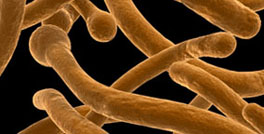Candida and... Depression | Anxiety | Insomnia | Migraines
|
Candida
Candida (technically called Candida albicans) is a microorganism in the category of yeast, fungi and mold. It is normal for it to live in small amounts in the digestive system and on other body surfaces. However, under certain circumstances it will invade into deeper tissues and organs where it doesn’t belong, such as the liver and kidneys, and become very abundant. Once it gets that far, it entrenches itself as fungi do (think of how hard it can be to get rid of athlete’s foot or a fungal toenail). The yeast produces certain chemicals and affects cell functions in ways that create many symptoms, some of which can become serious. The term “Candida” refers to the general overgrowth of various fungi and yeasts in the body, which flourish under certain circumstances to the point of causing illness. Candida albicans appears to be the most prominent of these microbes. The clinical facts and observations concerning Candida overgrowth presented here come from the research and clinical experience of John E. Humiston, M.D., a family practice physician who has worked with over a thousand Candida patients. NEXT ARTICLE: How do you get Candida? Updated: January 12, 2011 |
|
|||||
|---|---|---|---|---|---|---|
| 1-800-778-9006 |
Candida | Depression | Anxiety | Insomnia | Migraines | Treatment © 2009 - 2014 CandidaMD. All rights reserved. |

